I don’t really know how to cook. Sure, in the last month I’ve made pot roast, steak and multiple kinds of pasta, but they don’t count, right? They were easy! Many people think learning how to cook is too hard, but it’s really not. Here’s how I got comfortable cooking, completely by accident.
Photos by Robert Couse-Baker, Andrea Parrish – Geyer, Natalie Maynor and Nicole Abalde.
Growing up, I never really “learned” to cook. I picked up how to make one or two meals here and there, but I never took an interest in the art behind it. Even basic chemistry confused me, so putting together a bunch of powders, liquids and meats and hoping something tasty would come out felt more like alchemy than an everyday task that human beings have done since the dawn of civilisation. A few years ago, I decided that I needed to become a damn adult and learn to cook properly. Here’s what I learned, and all the ways I screwed up along the way.
Start With Minor Tweaks to What You Know
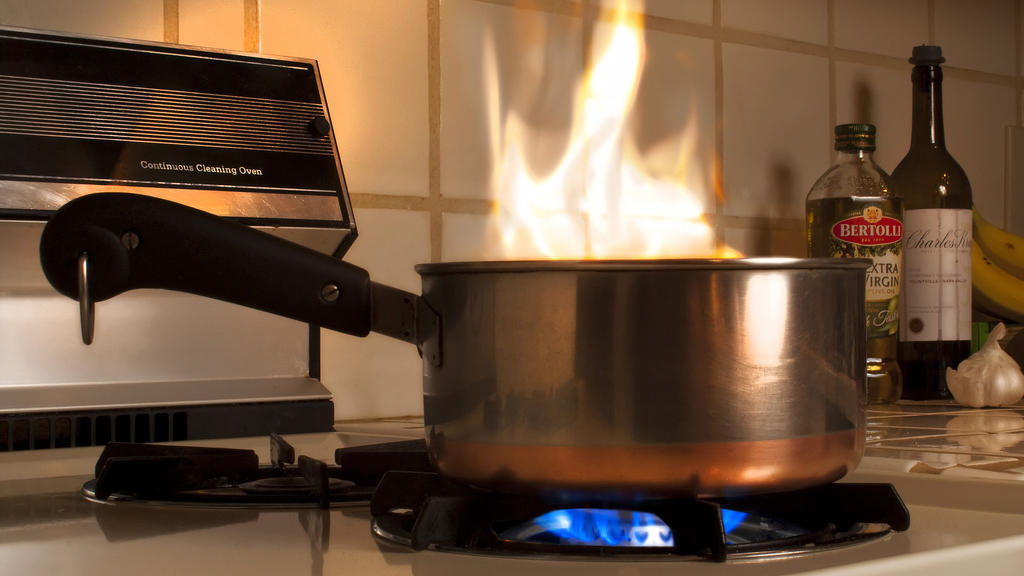
When I first decided I wanted to learn how to cook, I knew how to make exactly three things: spaghetti, grilled cheese sandwiches and slightly burned grilled cheese sandwiches. Also, the spaghetti barely counts because the sauce was technically pre-made, so really I just boiled water, stirred pasta and warmed up some sauce.
This wasn’t much, but it gave me a starting point. I knew I wasn’t going to immediately learn how to make chicken tikka masala, whatever that is. But maybe I could figure out how to make a different kind of pasta. My wheelhouse wasn’t very big, but I knew what was in it. The next step was to build on that.
Just kidding. Building on recipes I knew how to make would have been a smart thing to do. Instead, I did the stupid thing. I tried to make an exotic food I’d eaten at a restaurant that I had no clue how to make: naan. An oven-baked flatbread I’d eaten at Indian restaurants that I happened to love. With very little cooking experience under my belt, and a random naan recipe I googled, I decided the best way to branch out would be to make bread.
I am an idiot.
Unsurprisingly, it was a disaster. I didn’t let the yeast dissolve enough, I didn’t add enough flour and the dough came out a watery mess. While it sounds simple to just “follow a recipe”, I had no frame of reference for what certain stages should look like, so I misinterpreted the directions and ruined the batch. Eventually, I became so confused and frustrated that I cried into the mixture, which not only made it more watery, but also salty. That’s gross.
However, the failure taught me an important lesson. Start with what you know. After I failed at baking bread, I moved back to something simpler: modifying that one spaghetti recipe I knew. I started experimenting with different spices, different flavours of sauce (still pre-made in a jar, but one step at a time) and different types of noodles.
This helped me grasp what “cooking” really was, more than blindly following recipes. When I was just starting out, I didn’t need to understand how to make an entire Christmas spread from scratch. It didn’t matter so much that I was using pre-made sauces, as long as I learned how to make the dish taste good. Having most of the hard work already done allowed me to play around with the taste by itself. Even if you don’t have one recipe you already know, you can get started by experimenting with something simple like instant noodles.
Build Your Kitchen Slowly Over Time
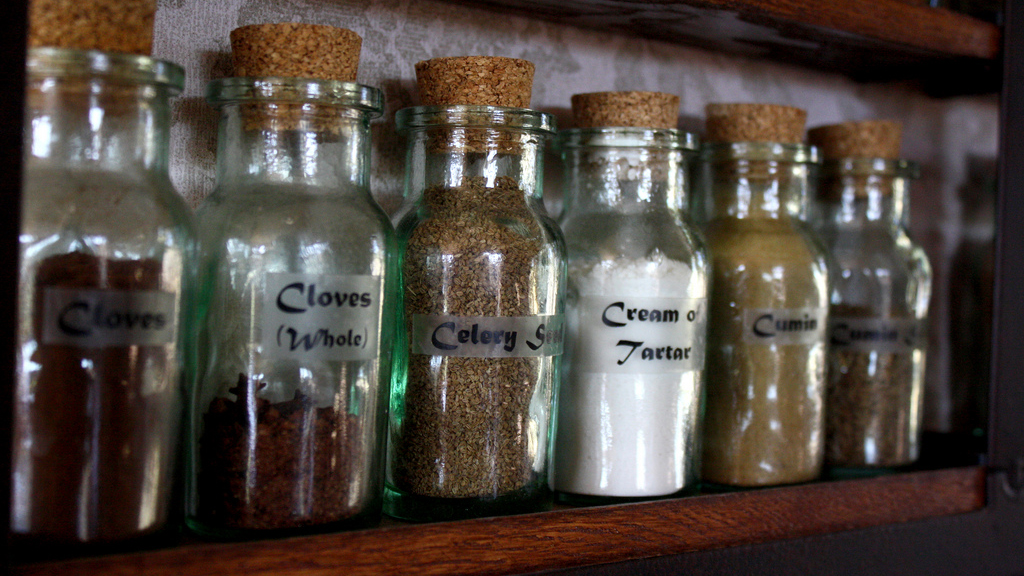
When I got my first apartment, I received a few housewarming gifts from some friends that included the bare essentials for cooking. Measuring cups, a set of pots and pans and a few dishes. At the time, I didn’t have a well-stocked pantry full of the various spices, oils and baking ingredients I’d need over time. I didn’t even have all the tools a well-stocked kitchen should have (and I still don’t).
This was overwhelming at first. Every recipe I found had a laundry list of things that they assume most kitchens just have. For example, this recipe for a spicy chicken breast included several ingredients that I had yet to acquire: paprika, garlic powder, onion powder, dried thyme and ground cayenne pepper. Kitchen pros may have all that stuff sitting around, but I didn’t. Just acquiring all of these spices would cost more than the meal itself. That’s a tough ask if you’re not in a good financial position to buy a ton of supplies at once.
Fortunately, you don’t have to buy everything all at once. In the early days, I started buying pre-mixed spices. Rather than a bottle with a crap-ton of one spice, pre-mixed spice bottles contain a blend that’s designed for a particular taste. Think of it like easy mode for seasoning a dish. I didn’t have a ton of flexibility with every dish, but I could make a simple chicken breast without blowing my grocery budget. Of course, pre-mixed spices are often easy to make yourself once you have all the basics, but for beginners, it’s a quick way to learn.
Eventually, I adopted a long-term strategy that helped me stock my pantry without overwhelming my budget. When I read about a new recipe I want to try, I make a list of the spices it contains. I then keep track of how many spices are repeated across multiple recipes, and note the ones that occur most frequently. After that, each time I go grocery shopping, I could buy one bottle of spices. I’d either pick up a pre-mixed bottle, or one of the spices from my list. It’s worth pointing out, you can also buy spice racks that come pre-filled with a few basic spices. This method also works if you can afford a bigger up front expense. Keep in mind that spices in pre-packaged racks may not be as fresh or last as long. Especially if you’re only planning to use a few of them in the near future.
However, I found that by buying my spices — as well as new kitchen tools, baking ingredients, appliances and so on — one at a time as I needed them, I understood each one better. Every time I bought a new ingredient or tool, it was on purpose. I had a specific need that built on my existing knowledge. Even if it was more expensive, it was worth buying my kitchen supplies piece by piece.
Once You’re Comfortable, Start Getting Uncomfortable
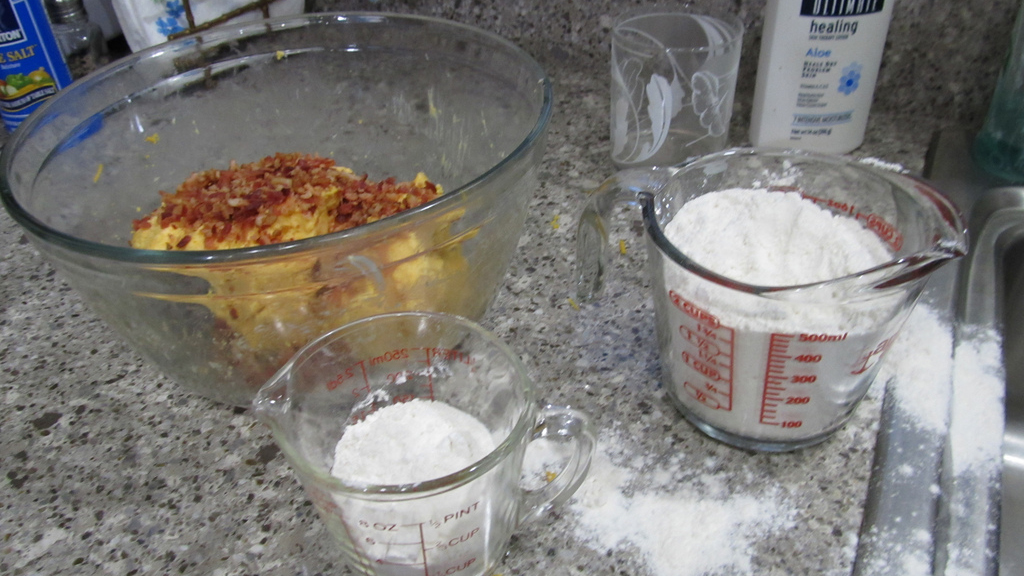
For seasoned cooks, adding garlic to spaghetti is one of the least scary things you could do, but in my early days, it was nerve-wracking. Once I got used to experimenting with the few recipes I knew, it was time to tackle something I’d never cooked before. Like steak. Mmm, delicious steak. That would be good.
Now, there are all kinds of ways that cooking a steak can go wrong. You can get the wrong cut of meat. You could fail to tenderise it, or tenderise it at all. You could use the wrong marinade, or heaven forbid, marinate it. You could use the wrong seasonings, or cook it the wrong way. I know all of this because every man, woman and child in America has an opinion on each of those statements. With no knowledge of what the “right” way to cook a steak was, I set out to get cooking.
Steaks are a good food for learning how subjective recipes can be, because there’s no real “correct” time for how long it should be cooked, or even how to prepare it. You can cook it longer to get a well-done steak, or shorter to get a rare one. Determining how well your steak is cooked is a subjective thing that requires a few more creative tricks than simply watching a clock. This process naturally requires some trial and error. Error being the operative word. When you’re learning to cook, you’re going to screw some things up, but it’s OK to screw up, as long as you’re learning something. There are worse things in the world than eating a meal that didn’t come out quite the way you wanted.
Those first few steaks I made weren’t exactly great. For starters, I neglected the marinade because I didn’t understand it at the time (which it turns out isn’t entirely necessary?). I bought some off-the-shelf seasoning, which was pretty good. The cut of steak I bought — and continued to buy for roughly three years, before my girlfriend taught me a better way — was tough, but hey it was cheap. Despite all the failings and inadequacies of my early steaks, they were still a good meal that I enjoyed. I quickly learned that “failing” a recipe wasn’t as easy as I’d thought. Even if my first few steaks were objectively terrible.
This entire process was uncomfortable for me because I’m used to having a “right” way to do something. When I build a computer, for example, things are either connected correctly or they aren’t. There’s no eyeballing it until it feels right. Every step of cooking a steak — and cooking in general, really — runs counter to this type of thought. You can choose to marinate or not, you can pick wildly different spices, and you can burn it as much or as little as you want. It’s a great lesson for all the ways you can play around with how to cook a meal. It’s more important that you experiment and learn how things work, rather than trying to do everything the “right” way.
Don’t Be Afraid of the “Easy Way”
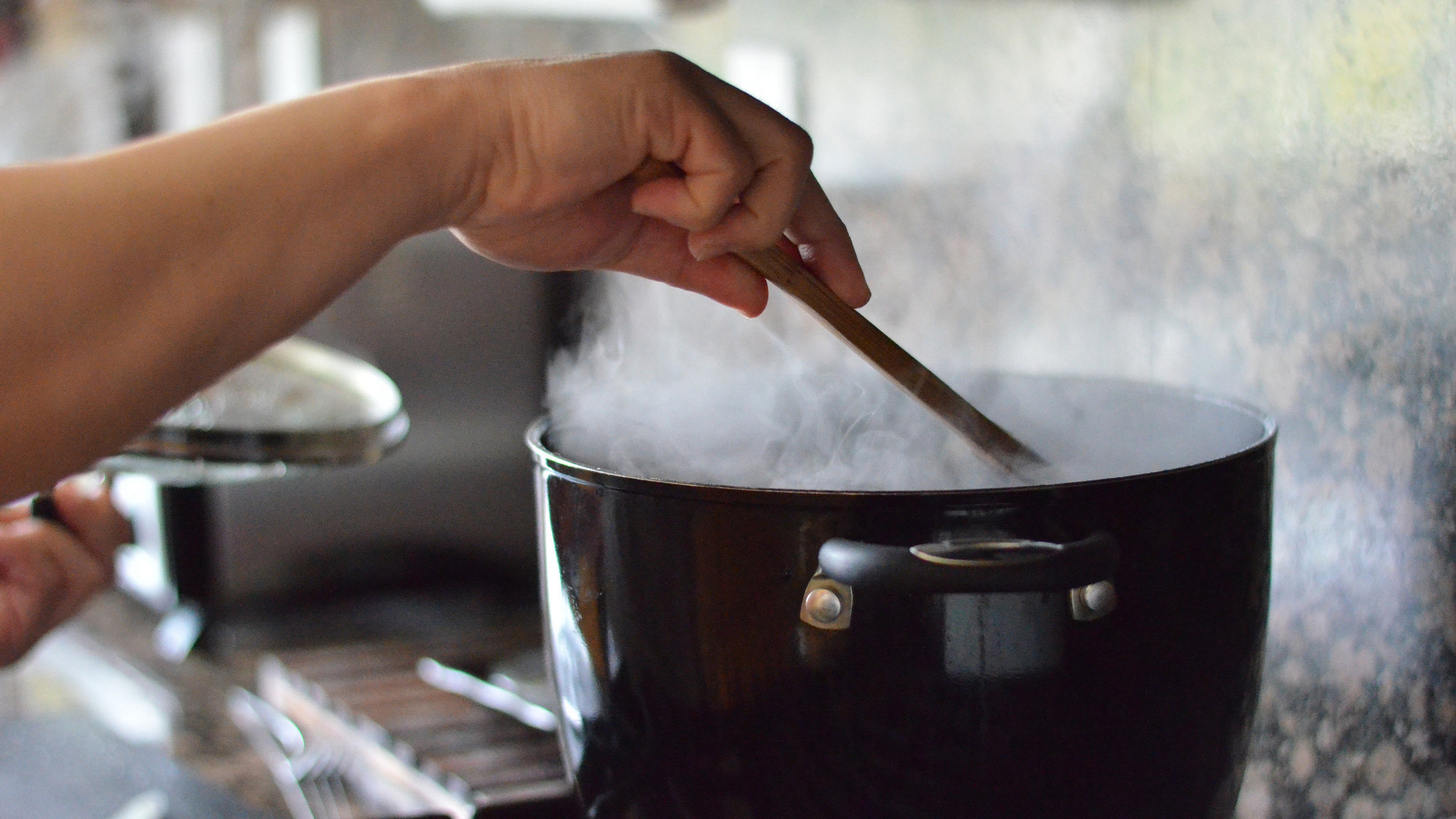
When I think about what it means to “be able to cook” I picture dudes who use words like “herbaceous” and “pan-seared” with skills I will never be able to match. However, while there are always going to be master chefs who are better at it than you, you don’t need to compete or do things the hard way just for the discipline. All you have to do is make tasty, preferably healthy food.
Enter the slow cooker. Eventually, I worked my way up to buying a slow cooker. Read Lifehacker long enough, and you’ll start to think that slow cookers are God’s gift to cooking. That’s because they are. I finally bought one about a year and a half ago and decided to start making as many meals as I could in it.
For one of my first recipes, I made a pot roast. Much like that spaghetti I’d learned to make so long ago, it was made from mostly pre-made ingredients. A can of cream of mushroom soup, a can of beef broth and a packet of onion soup mix. I didn’t need to learn how to blend the spices just right, I didn’t have to carefully check the roast to know when it was fully cooked. I barely even thought about it. Just pour the ingredients in, maybe brown the roast a bit first, drop it in and set the timer. When I come back in 6-8 hours, I’ll have a delicious home-cooked meal.
It feels like cheating. Slow cookers can make you feel really lazy, even though you just made a meal for four. That’s not necessarily a problem, though. As the great Carl Sagan taught us, if you wish to make an apple pie from scratch, you must first invent the universe. How far back in the process do you really need to go before you feel like you’ve “accomplished” cooking? Does it not count as cooking unless I mixed the spices themselves? Do I have to make my own broth? How does one go about inventing a universe, anyway?
While it sounds like a lot of philosophising over nothing, I found that it became a real psychological barrier for me. No matter how many times I cooked, I still felt like I didn’t “really” know how to cook. If you don’t think you can cook, you’ll be hesitant to try new and riskier things. I might give off the impression that I experimented often. In reality, months passed between each new experiment, because I was afraid of spending money on something I’d obviously screw up — all because I’m so bad at cooking, right?
Well, last week I bought a pressure cooker. Clearly someone who “can’t cook” has no business with such a device, but I did it anyway. So far, we’ve used it three times in my home with no major disasters. The food was tasty, too. How about that? I didn’t need to take classes or spend all day neck deep in cooking sites to learn how to cook some chicken. Prior to this point, I’d been making the same recipe on the stove. The pressure cooker was just an easier alternative, and there’s nothing wrong with that.
I still don’t describe myself as someone who “knows how to cook” because I don’t think of myself that way. And I’m certainly not the best person to be giving advice. Nothing here should be construed as the correct way to cook something, because what do I know? I’m handy enough in the kitchen, but there’s still a lot I don’t understand.
That’s the point, though. If you’re afraid of cooking, don’t worry. The worst that can happen is you make a meal that isn’t that great. Or you’ll end up crying over a pool of watery dough and then write about it on the internet. Either way, cooking is an extremely accessible skill that benefits everyone. We’ve written roughly a bajillion articles to help you learn how to cook if you’re new to it. You can even check out our ‘skillet’ tag for nothing but cooking tips, all day every day.
My journey through learning how to cook will obviously differ from yours. Most of the problems I had were purely psychological, and everyone learns differently. Every cooking resource you can find is a jumping off point, but it’s OK if you don’t have a recipe or an instructor holding your hand the whole way through. Even if you screw up making a meal, it’s still better than eating fast food.
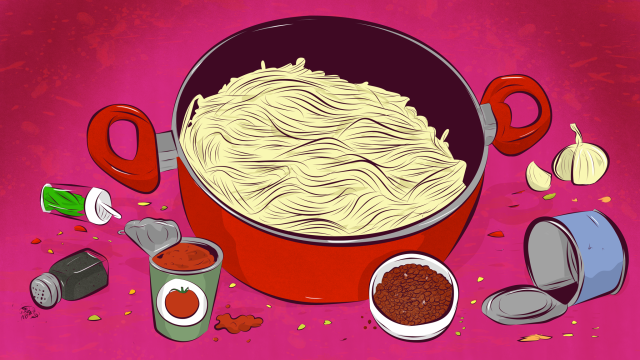
Comments
5 responses to “How I Conquered My Fear Of Cooking And Got Comfortable In The Kitchen”
Who still looks at recipes? Watch YouTube for it, including a frame of reference.
TV chefs (and masterchef) have a lot to answer for. It’s easy to be misled into thinking that “cooking” means producing a 5 course degustation that’s perfectly styled for instagram. Which is, of course, complete bollocks.
Everyone should know at least one recipe that uses mince. It’s cheap and versatile and pretty much every cuisine has a recipe that uses it.
Mince is great and so easy to use in some great dishes
Bolognese, meat loaf, con carne or pasta bake are my go to simple mince dishes.
One of the reasons I’ve always like Nigella Lawson as a ‘celebrity chef’. Just make nice tasty food that isn’t aiming for Michellin stars. Also love her attitude about teaching kids to cook, it doesn’t always have to be fun. Sometime they just need to peel the potatoes to make mash, it’s a chore but if you want to eat you get it done.
I like Jamie Oliver for the same reasons – He did a great segment on “Save with Jamie” where he made his veggie macaroni cheese bake. One version had all fresh vegies, and the other used all frozen, just to demonstrate that you can still make really tasty food and healthy dinners, but save money if you need to.
Id just like you guys to know, what they are discovering, what these chefs are bringing to you is culture.
Something that is void in Anglo-Saxon backgrounded people pertaining to cooking.
Everything nigella, oliver, ramsay show you, is things Italians/greeks/me have been doing for millennia.
Its nice to see it come full circle instead of being paid out for eating salami and olives (Y).
My suggestion is this.
Italian cooking starts with the same base, every time. Olive oil, onion and garlic, once the foundations are set, you can essentially make anything.
Happy to help with any recipes any1 may have